



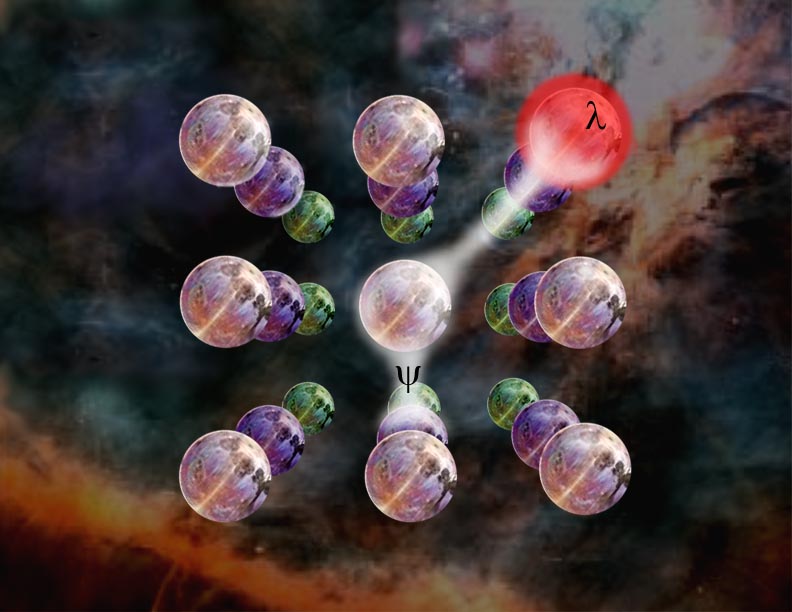
The following list contains some representative reasearch in the areas of quantum communications, quantum well laser devices, photonic circuit fabrication including photodissolution and instrumentation for monitoring etches, electrical transport and drift mobility in amorphous semiconductors, the quantum vacuum and elementary particle theory. Further discussion can be found by following the links. The website is being rennovated and linked resources will not be fully available until fall of 2020.
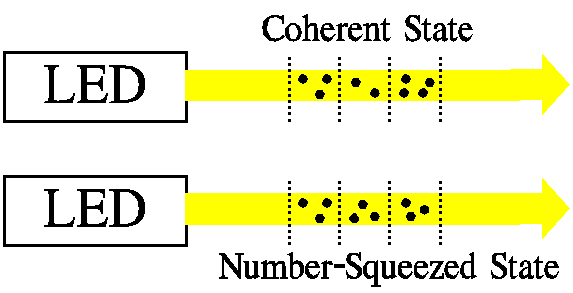
Quantum Communicator
The quantum communicator modulates the statistical moments of an optical signal that has variance smaller than the standard quantum limit (SQL, i.e., sub-shot). The demonstration unit modulates the average photon number and the quantum uncertainty in the photon number. For number squeezed light (sub-shot number variance), the communicator potentially offers built-in security in that a partial tap introduces partition noise that can be monitored as part of the variance signal. The work also developed microprocessor-based systems and algorithms for generating and detecting the statistical moments and encryption of the moments. The physical principles address low signal-to-noise signals related to nanoscale components.
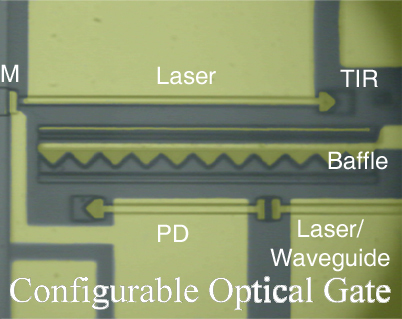
Quantum Well Laser Logic
The laser logic devices comprise families of smart pixels that function both as an optical interconnect and as a logic element (analog or digital). The family of quenched laser devices use the optical gain quenching of a main laser by a side laser to implement inversion, NOR, flip flop memory, optical amplifiers and optical FM demodulators. The family of Configurable Optical Gates (COGs) includes the typical logic plus optical amplifiers, optical adders, modulators. Other families include coupled waveguides, SEED devices and q-switching with intracavity modulators.
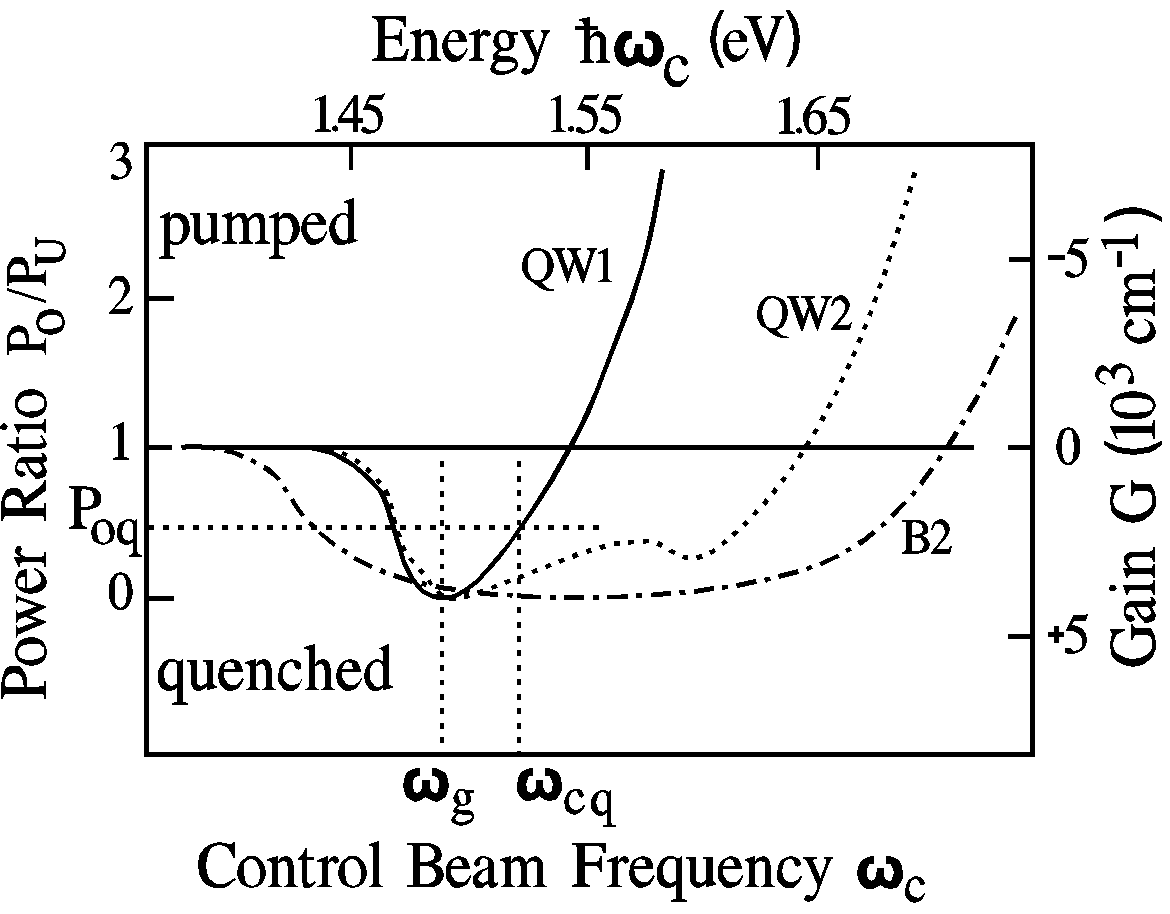
Laser Logic Models
The models for the quench laser devices include (i) the simplest showing the effect of a control beam on the threshold current of the main laser without regard to wavelength and (ii) one with the wavelength effects. The quench lasers use the competition of a side-injected control beam for the gain of the main laser. Various models and operating principles for the COGs can also be found in the publications and technical reports.
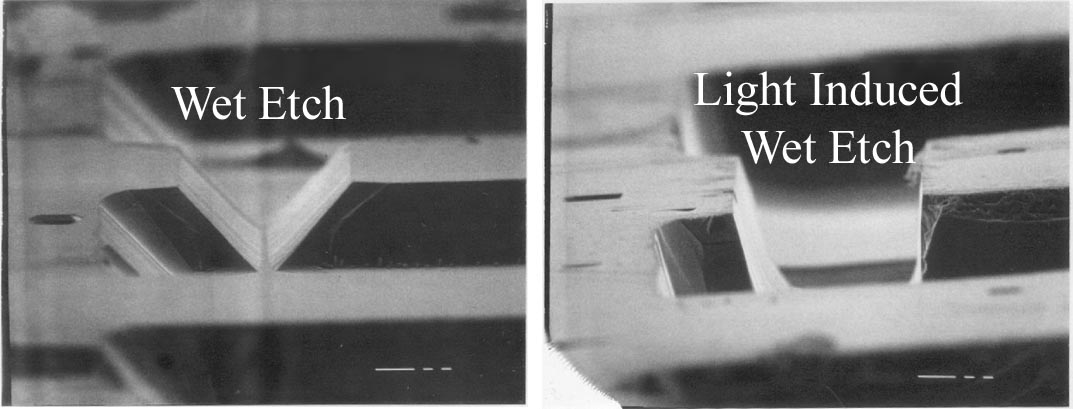
III-V Fabrication
Fabrication of nanoscale (and sub-micron) optical and electronic components generally requires a full clean room. The linked documents focus on those methods that differ from the typical especially in the area of photo-dissolution (Light Induced Wet Etching, Photo-Assisted Wet Etching) and interferometric etch monitors/controllers. Etching regardless of dry or wet is used to remove underlying material in selected regions (as defined through photolithography) to form the features and structure of the devices. Etched laser mirrors require very verticle and highly smooth sidewalls. Fabrication steps and recipes can also be found in the publications and technical reports.

Amorphous Silicon a-Si:H
Hydrogenated amorphous silicon is a non-crystalline form of silicon (Si). The periodicity of the Si array is distorted by dangling bonds (db) and those dbs terminate by Hydrogen (H). The a-Si:H experiments explored the possible existence of an anisotropic electron drift mobility along with other interesting effects related to optically induced disorder, thermal annealling of the disorder, and the consequential effects on electrical transport. The amorphous silicon has applications in III-V fabrication and solar cell amoung others.

Theoretical Physics
Theoretical Particles Physics (i.e., theoretic high-energy physics) and Quantum Field Theory (and QCD) combine in the Standard Model to predict the existence of elementary particles, their behavior and the mediating force particles. Some people view it as looking for the one equation that underlies the variety of sciences and egineering in the world. The standard model for the elementary particles and their interactions (and mass) forms the backbone of modern particle physics (in addition to the newer variations of the String Theory). Over the past decade, one ingredient/prediction of the standard model, namely the Higgs boson, has been experimentally verified by way of CERN experiments. The gluon, as the conveyor of the nuclear force, can also form the glueball particles among themselves; however, the results of experiments only point to likely candidates in the CERN results.